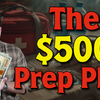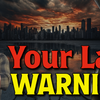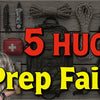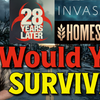How to Start Prepping with Just $500
If you only had $500 to get started in preparedness, what would you buy? That’s the question I get asked all the time — and after 25+ years of prepping, I’ve learned what really matters when starting from zero.
Preparedness doesn’t mean panic buying or spending thousands on gear you’ll never use. It’s about smart priorities and building a solid foundation one step at a time. So, here’s how I’d spend my first $500 if I had to start all over again.
1. Water: $80
Water is life. You can survive weeks without food but only days without water.
-
Sawyer Mini water filter ($25)
-
A few 7-gallon Aquatainers for storage ($40)
-
Purification tablets and a collapsible jug ($15)
That setup gives you both storage and filtration, ensuring you can handle everything from short-term outages to extended emergencies.
2. Food Storage: $100
Focus on shelf-stable, calorie-dense staples:
-
Bulk rice, beans, and oats
-
Peanut butter, canned meats, pasta, and salt
-
Spend about half on long-term staples and half restocking pantry staples
For around $100, you can easily cover 2–3 weeks of food for one person (or a week for a small family).
3. Cooking & Heat: $60
Without power, you still need to cook.
-
Small propane camp stove + 2 fuel canisters ($40)
-
Fire-starting kit, matches, and lighters ($20)
This setup gives you reliable cooking options no matter the situation.
4. Lighting & Power: $50
Light equals safety and comfort.
-
Rechargeable headlamps and lantern ($35)
-
Small USB power bank ($15)
Rechargeable options save money and ensure you’re never stuck in the dark.
5. First Aid & Hygiene: $50
Cleanliness and medical care often get overlooked.
-
Pre-built first aid kit ($30)
-
Hygiene supplies: soap, toothpaste, hand sanitizer ($20)
A small investment that can prevent infection, sickness, and discomfort.
6. Tools & Protection: $100
-
Multi-tool ($30–40)
-
Fixed-blade knife ($40–50)
-
Pepper spray or personal defense tool ($10–20)
Versatile tools that add real capability without breaking the bank.
7. Information & Communication: $60
-
Battery-powered or solar emergency radio ($35)
-
Paper maps, notebook, and backup cash ($25)
When the grid’s down, knowledge becomes power. A radio keeps you connected to critical updates.
Final Thoughts
With just $500, you can build a strong base for survival — food, water, light, tools, and safety. The goal isn’t perfection; it’s progress. Combine this with items you already have at home (like boots, jackets, or backpacks), and you’ll be better prepared than most of the population.
Preparedness isn’t about fear. It’s about peace of mind. And $500 can buy a lot of that.




